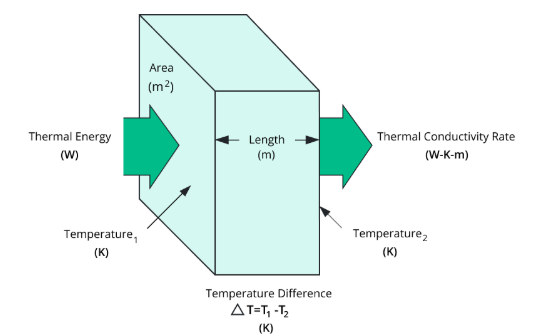 Home
Home
 Back
Back

Definition: This converter transforms thermal conductivity values between various units. Thermal conductivity measures a material's ability to conduct heat, typically in watts per meter per Kelvin (W/m·K).
Purpose: Essential in materials science, engineering, and thermodynamics for converting thermal conductivity units in applications like insulation design and heat exchanger analysis.
The converter uses conversion factors relative to the base unit watt/meter/K [W/m·K]:
Steps:
Thermal conductivity conversion is critical for:
Example 1: Convert 1 watt/meter/K to Btu(IT) inch/hour/sq. foot/°F:
Result: 6.93349 Btu(IT) inch/hour/sq. foot/°F
Example 2: Convert 1 kilocalorie(IT)/hour/meter/°C to watt/meter/K:
Result: 1.16300 watt/meter/K
Q: What is thermal conductivity?
A: Thermal conductivity measures a material's ability to conduct heat, typically in watts per meter per Kelvin (W/m·K).
Q: Why are there different units for thermal conductivity?
A: Different fields use different unit systems (e.g., SI, imperial, caloric), requiring conversions for consistency.
Q: What’s the difference between IT and th units?
A: IT units (e.g., calorie(IT), Btu(IT)) are based on the international steam table, while thermochemical units (e.g., calorie(th), Btu(th)) use slightly different energy definitions.
Q: Can this converter be used for all materials?
A: Yes, it converts units of thermal conductivity, which applies to any material where heat conduction is measured.